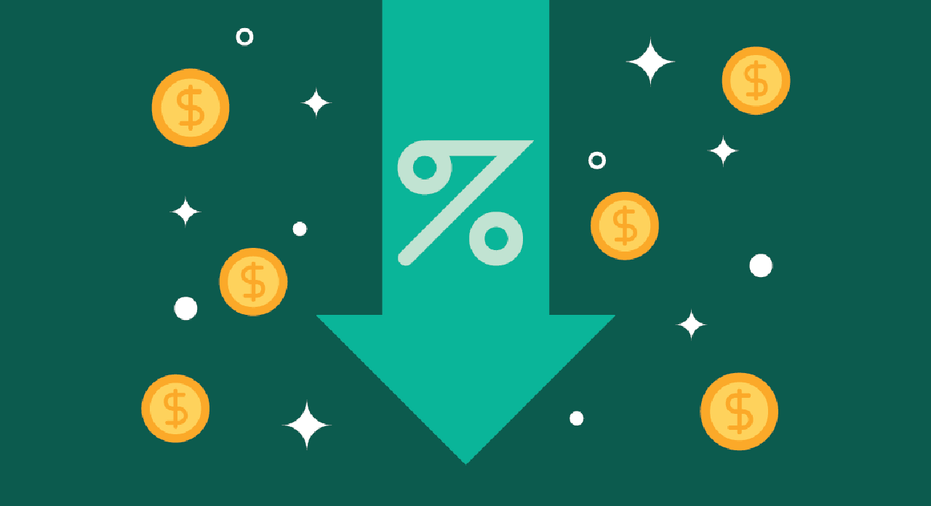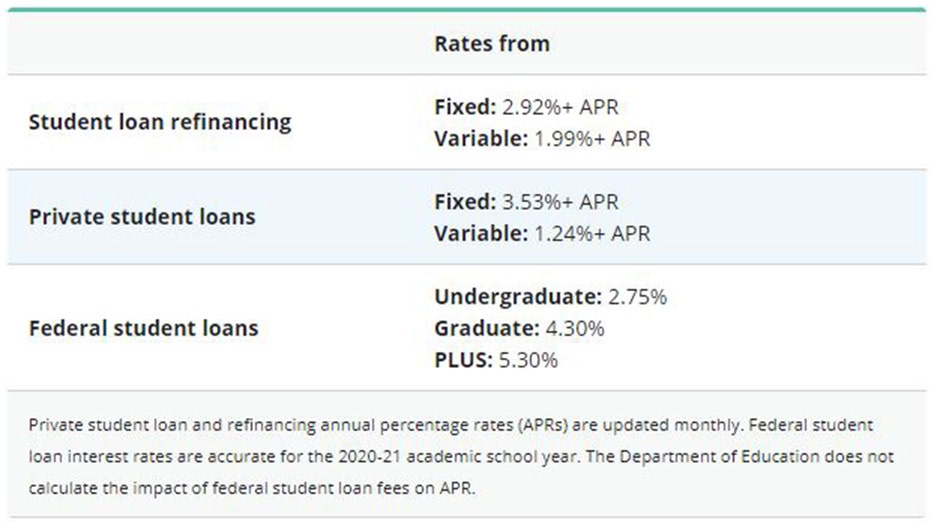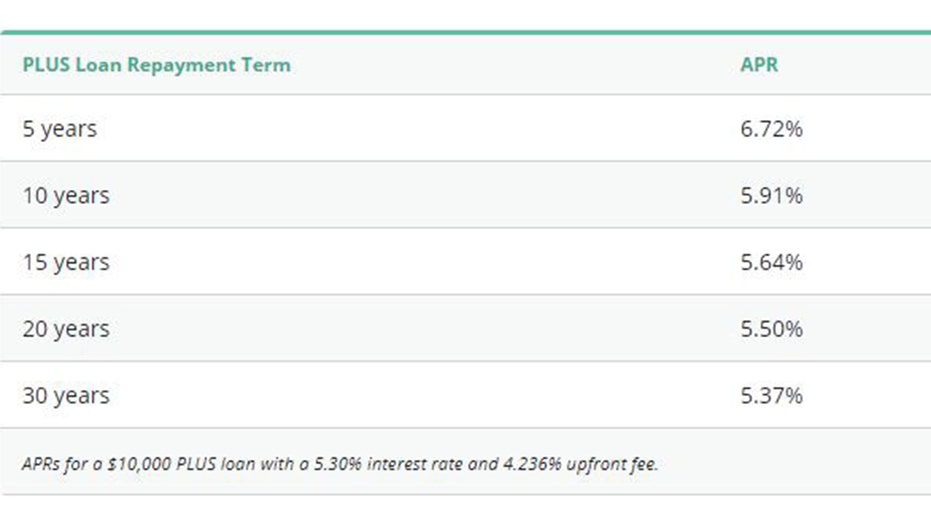Pandemic drives down private student loan rates

Many borrowers can qualify for private student loans at interest rates that can be competitive with federal PLUS loans. (Credible, photo illustration)
Interest rates on private student loans have fallen dramatically during the coronavirus pandemic, according to an analysis of historical rate data from the Credible private student loan marketplace.
The analysis shows many borrowers qualified for private student loans in July at interest rates that can be competitive with federal PLUS loans.
Among borrowers using the Credible marketplace to choose a lender during July:
- Rates on 10-year fixed-rate student loans averaged 6.42%, down 31% from an April 2017 peak of 9.27%
- Initial rates on 5-year variable-rate student loans averaged 3.33%, down 63% from a February 2018 high of 8.94%.
Looking beyond interest rates
College financial aid advisors typically recommend that if students must borrow for college, they start with federal student loans, which offer rates that are at all-time lows for the 2020-21 academic year.
That’s because interest rates on federal student loans are fixed for life, and government loans provide important borrower benefits like access to income-driven repayment programs and potential loan forgiveness.

But once students hit their borrowing limits on the most affordable federal loans, private student loans can be an alternative to federal PLUS loans, which carry higher interest rates and fees than other federal loans.
It’s a good idea for borrowers to consider several private student loan lenders before selecting a loan. Credible makes this easy — borrowers can compare rates from the lenders Credible is partnered with in the table below
Rates by credit score
Unlike federal student loans, which offer “one size fits all” rates, private lenders will offer lower rates to borrowers with good credit scores. So whether a private student loan is competitive with a federal PLUS loan depends on the student, or their cosigner’s, credit.
The chart below shows that private student loans start to be competitive with federal PLUS loans as the borrower or cosigner’s credit score approaches 700.
Interest rate vs APR
When comparing rates on federal PLUS loans to private student loans, it’s important to keep in mind that unlike private lenders, the federal government is not required to calculate the annual percentage rate (APR).
The APR calculation helps borrowers understand the impact of any fees charged by the lender over the duration of their loan. As the chart below shows, when fees are spread out over a longer period of time, they have a smaller effect on APR.

Families taking out PLUS loans during the 2020-21 academic year will pay 5.30% interest. After factoring in the 4.24% up-front fee, the APR on PLUS loans can be around 5.9%, when repaid over 10 years.
Fixed- vs. variable-rate loans
While rates on federal student loans are fixed for life, most private student lenders offer a choice of fixed- or variable-rate loans.
You can typically get lower rates with a variable-rate loan to start out, but your interest rate and monthly payment can go up or down with the index rate that it’s tied to. Lenders typically make this adjustment on a monthly, quarterly or annual basis.
Most variable-rate student loans are indexed to the prime rate or the 1-month London Interbank Offered Rate (LIBOR). The lender adds a margin on top of the index rate, based primarily on your credit score, the loan repayment term, and the index used.
Whether to choose a fixed- or variable-rate loan depends largely on your tolerance for risk. Variable-rate loans often provide a maximum interest rate cap, but it might be as high as 15% to 18%.
The chart below shows how the prime rate and LIBOR tend to rise when there’s strong economic growth, and fall during a recession. After the 2008-09 recession, the prime rate and LIBOR remained near historic lows for several years, before beginning to rise in 2016.
Now that the indexes have returned to those lows, they’re expected to rise when the economy begins to recover from the impact of the pandemic. But there’s little agreement on when and how fast the economy will recover and rates will head up again.
Learn more:
- How to Pay for College
- How to Find a Cosigner for Your Student Loans
- How to Take Out a Student Loan
- When You Should Apply for a Student Loan
- How Long Does It Take to Get a Student Loan?
- Federal vs. Private Student Loans: 5 Differences
Methodology: Historical private student loan rates are average prequalified rates for borrowers who used the Credible marketplace to select a lender. Private student loan rates by credit score are median prequalified rates for borrowers using the Credible marketplace to select a lender in July, 2020. Variable-rate loans can rise and fall with benchmark interest rates.
About Credible: Credible is a multi-lender marketplace that empowers consumers to discover financial products that are the best fit for their unique circumstances. Credible’s integrations with leading lenders and credit bureaus allow consumers to quickly compare accurate, personalized loan options ― without putting their personal information at risk or affecting their credit score. The Credible marketplace provides an unrivaled customer experience, as reflected by over 3,600 positive Trustpilot reviews and a TrustScore of 4.7/5.



















